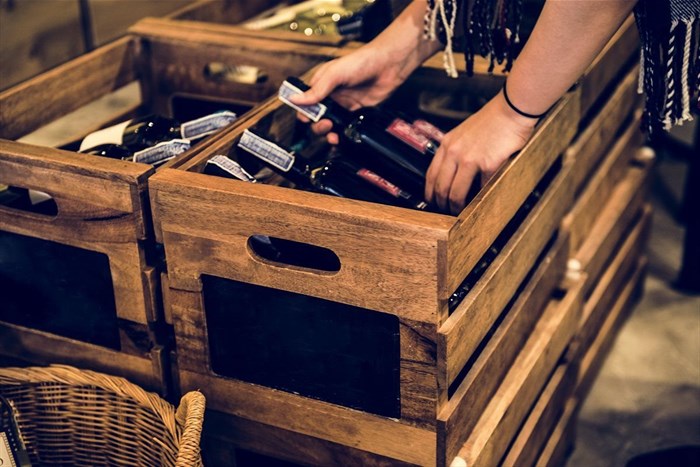
SA wine at a crossroads: Turning US tariffs into global brand opportunity

This escalation in trade tensions arrives at a precarious time for the global wine industry, which is already contending with declining consumption, inflationary pressures, and rapidly evolving consumer preferences.
More than just a commercial setback, the tariff increase highlights how exposed export-reliant sectors are to geopolitical volatility. For South African wine, the implications are significant. The US’s complex three-tier distribution system, where importers, distributors, and retailers each add a margin, means a 30% tariff could translate into a 45–50% increase in retail prices. This sharp rise risks pricing many South African labels out of the US market, particularly on retail shelves and restaurant wine lists.
Competitors such as Chile and Argentina face only a 10% tariff, while wines from the EU and Australia are taxed at 20%, placing South Africa at a clear disadvantage. While a few premium brands may manage to absorb this increase, the likelihood of maintaining profitability and sustainable exports under such conditions is extremely slim.
Yet amid this disruption lies a catalytic moment.
The challenge is urgent, but so too is the opportunity: to reassert the distinctiveness of South African wine brands on the world stage, to deepen its emotional and cultural relevance, and to reposition it for long-term sustainability and growth through strategic storytelling, provenance branding, and premiumisation.
The vital role of sector bodies
At the heart of this recalibration are the sector bodies, Wines of South Africa (WoSA), South Africa Wine, and other advocacy groups such as the South African Wine Industry Professional Body, which serve as the industry’s bridge to government, international trade forums, and key markets. Their immediate focus is lobbying for tariff relief, ensuring the industry’s voice is heard and helping to elevate the reputation of South African wines on an international stage. Their leadership to date has been nothing short of exemplary, especially in the face of mounting global headwinds.
But their role goes far beyond damage control. These institutions are the architects of long-term strategy, driving diversification into emerging markets such as Asia and the Brics bloc, and ensuring that South African wine remains globally competitive, not just despite trade barriers, but because it is irreplaceable in character and story.
Provenance: Turning place into brand identity
In today’s saturated wine landscape, provenance is far more than a marketing tool; it is the foundation of brand identity. South Africa’s rich winemaking heritage, its distinct terroirs, and its complex social and environmental history create a provenance unlike any other.
In an age where consumers are increasingly sceptical about corporate claims, provenance branding provides a powerful tool for building trust and consideration. Provenance also gives consumers a sense of place, of authenticity, of meaning. It assures quality, but it also speaks to emotion, evoking pride, nostalgia, adventure, and purpose.
For global consumers seeking products that reflect their values, South African wine can embody sustainability, transformation, and craft.
The challenge, and the opportunity, is to communicate this more deliberately and more powerfully, turning a geographic origin into a brand advantage.
Storytelling: The engine of emotional resonance
If provenance provides the raw material, storytelling is the engine that gives it power. Authentic narratives, about vineyards, vintners, communities, and the land itself, turn facts into feeling. They connect the glass to the grower, the bottle to a broader social or environmental cause.
South African wine has no shortage of stories. From centuries-old estates to cutting-edge biodynamic farms, from women-led cooperatives to black-owned brands breaking barriers, the stories are real, resonant, and ready to be told. Through immersive digital campaigns, in-market masterclasses, and targeted activations, these stories can build trust and loyalty across global audiences.
This is not about nostalgia; it is about relevance. Storytelling aligns brand with the priorities of modern consumers, who increasingly buy according to belief.
Winning on value, not volume
With global consumption trends shifting away from mass-market wines, the future lies in competing on value, not volume. Premiumisation, positioning wines as aspirational, experience-led choices, is now critical to growth.
South African wines are well-placed to command a premium. They offer old-world quality with new-world energy, supported by innovation, transformation, and sustainability. In on-trade environments and direct-to-consumer channels, where storytelling and experience matter most, premiumisation allows producers to protect margins and break free from the pressures of commodity pricing.
But premiumisation also requires alignment across the value chain, from growers and exporters to marketers and government. It calls for investment in quality, consistency, and brand storytelling that can justify higher price points.
A call for collective action
Navigating this moment will require more than individual effort; it demands collective action. Sector bodies must continue to lead with vision, advocating not just for access but for relevance.
The industry must embrace innovation, from climate-resilient farming to digital storytelling tools that meet global consumers where they are. And transformation must remain central, not only as a social imperative but as a commercial strength that differentiates South African wine from the rest of the world.
Supporting emerging, black-owned, and smaller producers through export councils and targeted support mechanisms ensures that the industry’s growth is inclusive and sustainable.
From challenge to catalyst
The imposition of US tariffs is a stark reminder of the fragility of global trade. But it also serves as a catalyst, a moment for the South African wine industry to reclaim its narrative and reassert its value. What makes South African wine special has never been its price. It’s been its story. It's a place. It's people, and its purpose.
By doubling down on provenance, leaning into authentic storytelling, and embracing premiumisation, the industry has the tools to not just survive this moment, but to emerge stronger, more unified, and more globally resonant than ever before.
The world may place trade barriers in our way. But we have the character and a myriad of stories to rise above them.